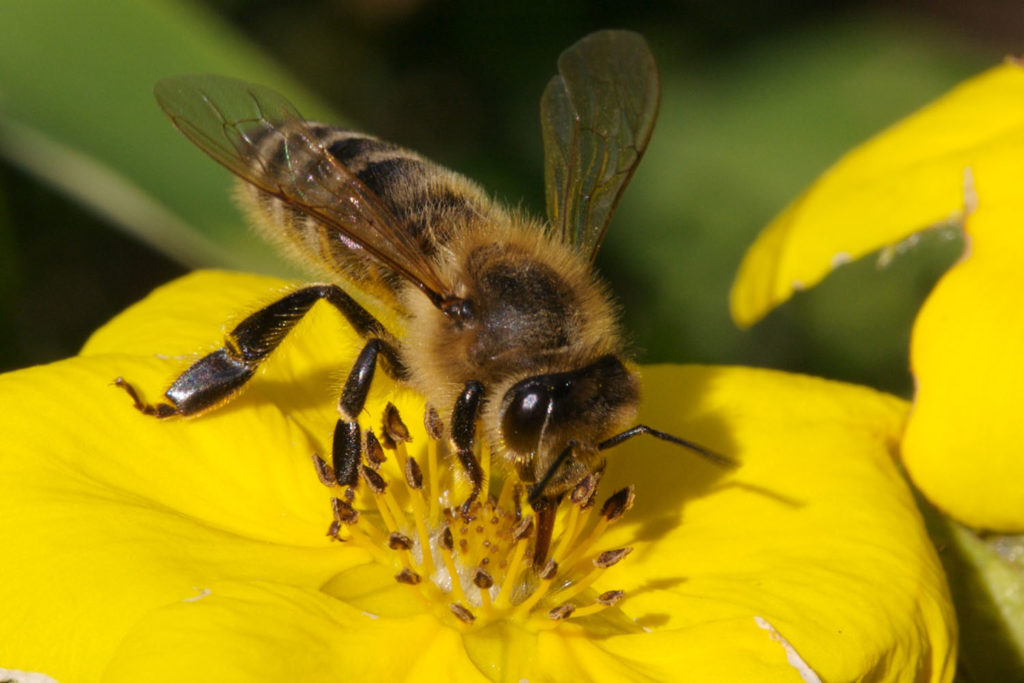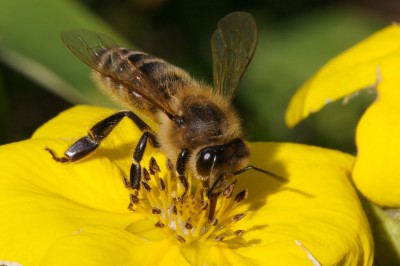If all the bees die, so do we. Sure, that is a very cryptic opening line, but it is also an extremely accurate and important tidbit of information. Even though it may seem like there are ample bees fluttering around when you are trying to have a family picnic, it is just not the case. Beekeepers from across America have lamented the decline of their colonies for several years. A recent Environmental Audit Committee (EAC) report in the United Kingdom shed more than a little light on the problem, but so far, United States agricultural experts have failed to take corrective steps.
A class of insecticide chemicals routinely used in America are killing off the bee population, according to the UK report. The chemical culprits are typically applied to rapeseed (canola), corn, sugar beets, and a handful of other crops around the world. Related data released in the European Union confirms the threat to healthy bee colonies.
Neonicotinoids reportedly possess compounds which adversely impact the central nervous systems of bees. The interference prompts a confused state during the pollination process. The ability to navigate back home to the hive is reportedly forgotten and is believed to result in the mass starvation of bee colonies. Neonicotinoids, also known as neonics, have been used since the early days of the last century.
The European Food Safety Authority feels the long-term usage has caused a worldwide Colony Collapse Disorder. A two-year ban on the insecticides in Europe was recently struck down. German and British officials were accused of caving to the powerful AG lobby when the pesticides bill was defeated. A total of fifteen European Union countries voted in support of the bee insecticide ban, but that was not enough to garner a “qualified majority” under commission rules.
EAC Chair Joan Walley had this to say about how a lackluster bee population impacts farmers:
“If farmers had to pollinate fruit and vegetables without the help of insects, it would cost hundreds of millions of pounds and we would all be stung by rising food prices. Defra [Department for the Environment Food and Rural Affairs] Ministers have refused to back EU efforts to protect pollinators and can’t even come up with a convincing plan to encourage bee-friendly farming in the UK.”
During the 1950s there were approximately six million bee colonies in the United States, but in the past six years or so, there have been between four and twelve million colonies die off. In recent years commercial beekeepers have lost about 30 percent of their colonies during the winter months. That percentage is nearly 50 percent higher than anticipated.
The Ultimate Guide to Keeping Stronger Colonies and Healthier, More Productive Bees
The bee industry contributes about $14 billion to the American economy. Renting bee colonies is big business. The almond industry spends about $239 million each year to rent more than one million bee hives. The cost of bee colony rentals is expected to go up as availability decreases.
Honey crops figures hit an all-time low in recent years. Spain reportedly experienced a loss of nearly 80 percent of their beehive population. Since bees are so important to annual crop yields and, by extension, the overall well-being of the human race, the situation should be taken far more seriously by agricultural officials in America.
A bee population study completed during the 1970s indicated that feeding high fructose corn syrup to the pollinators would not have a negative impact. However, honey substitutes often contain high fructose corn syrup. A Proceedings of the National Academies of Science report indicates that since more bees are now consuming the same cheap sugar substitute commonly found in soft drinks and processed foods, they are now more vulnerable to pesticides and “microbial enemies.” Some bee experts feel that the continued use of high fructose corn syrup and insecticides will lead to a worldwide and catastrophic collapse of the bee population.
“If you’re feeding them high-fructose corn syrup, then pathogens may be more dangerous and pesticides can be more toxic. The bees’ diet comes from an incredibly diverse array of plants that produce a tiny amount of nectar that doesn’t contain any toxic defenses. Nectar is designed for one thing: to lure insects or animals to drink it and carry away pollen on their bodies, ensuring the survival of the plant. So it’s not surprising that bees develop vastly fewer detoxification genes.”
A study of honeybee hives conducted in 2010 discovered traces of 121 different pesticides, including a popular agricultural fungicide. Berenbaum also noted that when bees have a comprised immune system, their longevity is further compromised.
There has been virtually no indication of bee population decreases in either Australia or Canada. Although that is good news for those folks, the rest of the world may one day be left with empty dinner plates if simple, yet necessary, steps are not taken to curtail dwindling bee colony numbers at other locales around the globe since bees and other pollinators fertilize approximately one-third of the crops we consume on a global level.
Jennifer Sass of the Natural Resources Defense Council had this to say about the failure of the Environmental Protection Agency to stamp out dangerous pesticide use:
“EPA should cancel all uses of neonics where they can lead to harm for bees and other beneficial insects, and chemical manufacturers like Bayer and Syngenta that make neonics should use their resources to develop less harmful alternatives instead of defending the neonics.”
The EPA favors a plethora of common-sense-defying regulations, yet when faced with a serious problem that requires immediate attention, they drop the ball. Without a neonicotinoid pesticide ban, it is extremely likely that both the American bee population and the overall health of the pollinators will continue to decrease. The Pesticide Action Network recently announced a lawsuit against the Environmental Protection Agency (EPA) over the continued use of neonics.

